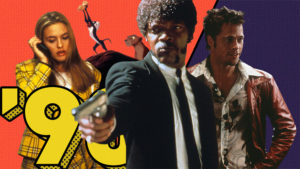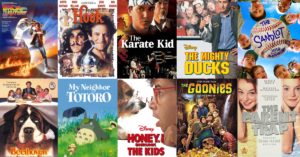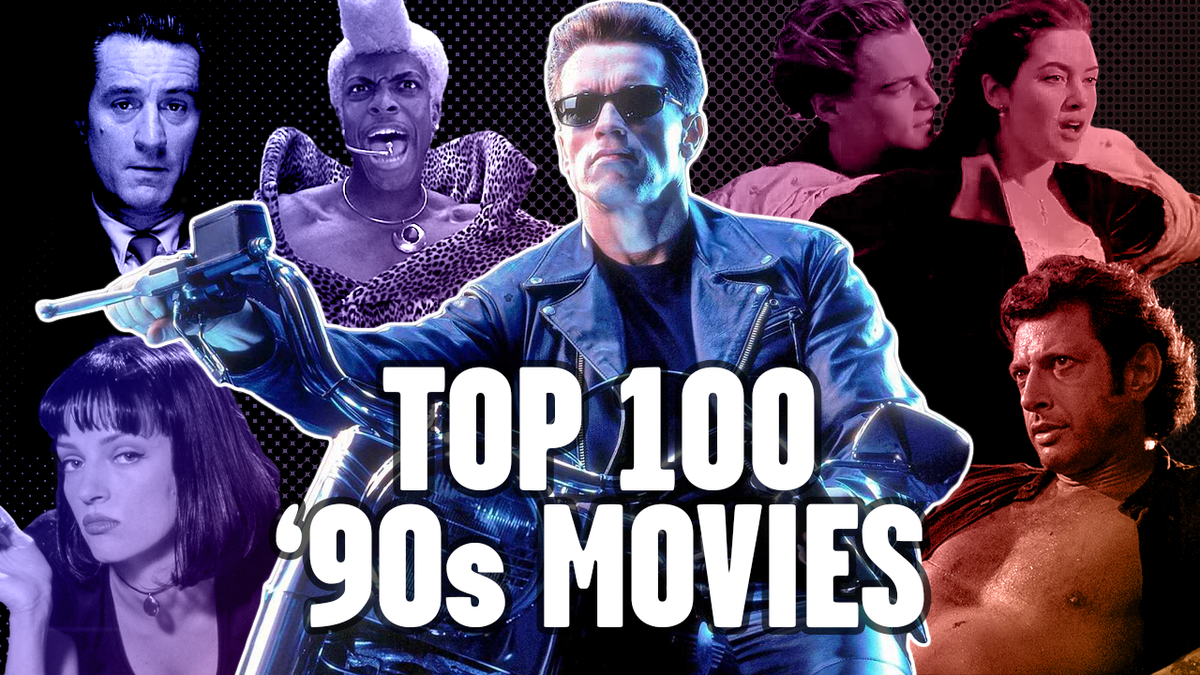The 1990s were a defining period for the film industry, producing some of the most beloved and critically acclaimed movies of all time. The decade saw the rise of groundbreaking storytelling, innovative special effects, and a renaissance of independent cinema. From blockbuster action films to thought-provoking dramas, the 90s offered something for every movie enthusiast. This article explores the major trends, iconic films, and lasting impact of 90s cinema.
The Rise of Blockbusters
The 90s witnessed a surge in blockbuster films, many of which remain cultural landmarks today. Studios invested heavily in big-budget productions, leading to a wave of spectacular movies that captivated audiences worldwide. Among the most notable were “Titanic” (1997), “Jurassic Park” (1993), “Independence Day” (1996), and “The Matrix” (1999). These films set new benchmarks in storytelling, special effects, and commercial success.
James Cameron’s Titanic was a monumental achievement in cinema, becoming the highest-grossing movie of the decade and winning 11 Academy Awards. Steven Spielberg’s Jurassic Park revolutionized visual effects with its realistic depiction of dinosaurs, paving the way for future CGI-driven films. Meanwhile, The Matrix introduced audiences to mind-bending science fiction, blending martial arts with cyberpunk aesthetics.
The Expansion of Independent Cinema
The 90s also saw a significant boom in independent filmmaking, with directors breaking away from traditional Hollywood norms. The rise of indie cinema was fueled by directors like Quentin Tarantino, Richard Linklater, and Kevin Smith, who brought unique storytelling approaches to the big screen.
Tarantino’s Pulp Fiction (1994) redefined crime films with its non-linear narrative, witty dialogue, and unforgettable characters. Richard Linklater’s Dazed and Confused (1993) became a cult classic, capturing the spirit of youth and nostalgia. Kevin Smith’s Clerks (1994) proved that a film could be made on a shoestring budget and still resonate with audiences. These movies demonstrated that compelling storytelling and strong character development were just as important as big budgets.
The Disney Renaissance
One of the most exciting aspects of 90s cinema was the resurgence of animated films, often referred to as the Disney Renaissance. This period marked a revival of Disney’s dominance in animation, producing timeless classics like The Lion King (1994), Beauty and the Beast (1991), Aladdin (1992), and Mulan (1998).
Disney’s renaissance films featured stunning animation, memorable soundtracks, and emotionally rich stories that appealed to audiences of all ages. Beauty and the Beast was the first animated film ever nominated for Best Picture at the Academy Awards, proving that animation could be just as powerful as live-action storytelling. Meanwhile, The Lion King became a global phenomenon, with its soundtrack and story remaining beloved to this day.

The Evolution of Comedy
Comedy in the 90s evolved with the rise of slapstick humor, romantic comedies, and edgy satire. Jim Carrey became a dominant comedic force, starring in Ace Ventura: Pet Detective (1994), Dumb and Dumber (1994), and Liar Liar (1997). His over-the-top physical comedy made him a household name.
Romantic comedies also flourished, with classics like Pretty Woman (1990), Notting Hill (1999), and You’ve Got Mail (1998) charming audiences. Meanwhile, satire and dark comedy took center stage with films like Office Space (1999) and The Big Lebowski (1998), which gained cult followings over time.
The Revolution of Action Cinema
Action movies in the 90s reached new heights with explosive stunts, high-speed chases, and larger-than-life heroes. Films like Terminator 2: Judgment Day (1991), Speed (1994), and The Rock (1996) delivered adrenaline-pumping thrills. Bruce Willis’ Die Hard with a Vengeance (1995) and Keanu Reeves’ The Matrix (1999) cemented their status as action icons.
Directors like Michael Bay and John Woo pushed the boundaries of action filmmaking, incorporating slow-motion sequences, elaborate gunfights, and jaw-dropping explosions. These films laid the groundwork for the modern action genre, influencing filmmakers in the 2000s and beyond.
The Influence of Sci-Fi and Fantasy
The 90s were also a golden age for science fiction and fantasy films, with movies that combined cutting-edge technology with compelling storytelling. The Fifth Element (1997) presented a visually stunning futuristic world, while Men in Black (1997) blended sci-fi with comedy in a highly entertaining fashion.
Fantasy films also made their mark, with The Mummy (1999) bringing an adventurous spirit reminiscent of classic serials. The decade set the stage for epic fantasy sagas like The Lord of the Rings, which would dominate the early 2000s.
Horror and Psychological Thrillers
Horror films in the 90s experienced a revival with self-aware storytelling, psychological terror, and supernatural elements. Scream (1996) reinvented the slasher genre by blending horror with meta-humor, while The Blair Witch Project (1999) pioneered the found-footage horror style.
Psychological thrillers also gained popularity, with The Silence of the Lambs (1991) delivering one of the most chilling performances in film history. Other notable thrillers like Se7en (1995) and Fight Club (1999) explored dark and complex themes, leaving a lasting impact on audiences.

The Cultural Impact of 90s Movies
The legacy of 90s movies continues to thrive today, with many films from the decade considered classics. The storytelling techniques, special effects, and character-driven narratives established during this period set the foundation for modern cinema. Many directors who emerged in the 90s, like Quentin Tarantino and Christopher Nolan, continue to shape the industry.
Streaming services have also revitalized interest in 90s films, making them more accessible to newer generations. The nostalgia for 90s movies remains strong, as seen in reboots, remakes, and references in pop culture.
Conclusion
The 90s were a truly transformative decade for cinema, blending artistic ambition with commercial success. From blockbusters to indie gems, animated classics to action-packed thrillers, the diversity of 90s movies ensures their place in film history. Whether you’re revisiting old favorites or discovering them for the first time, the magic of 90s cinema continues to captivate audiences worldwide.
